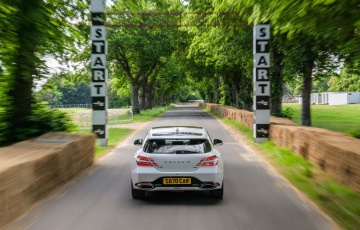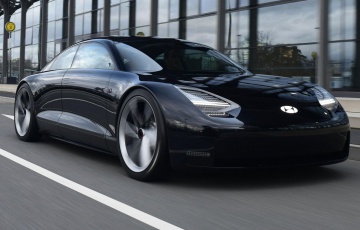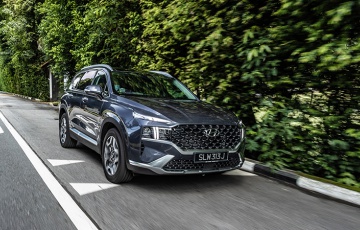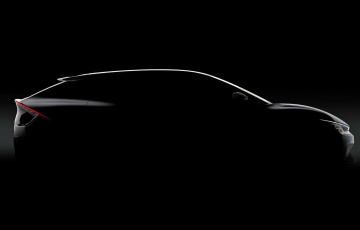Hyundai Kona EV 2021 Review : Funky Town
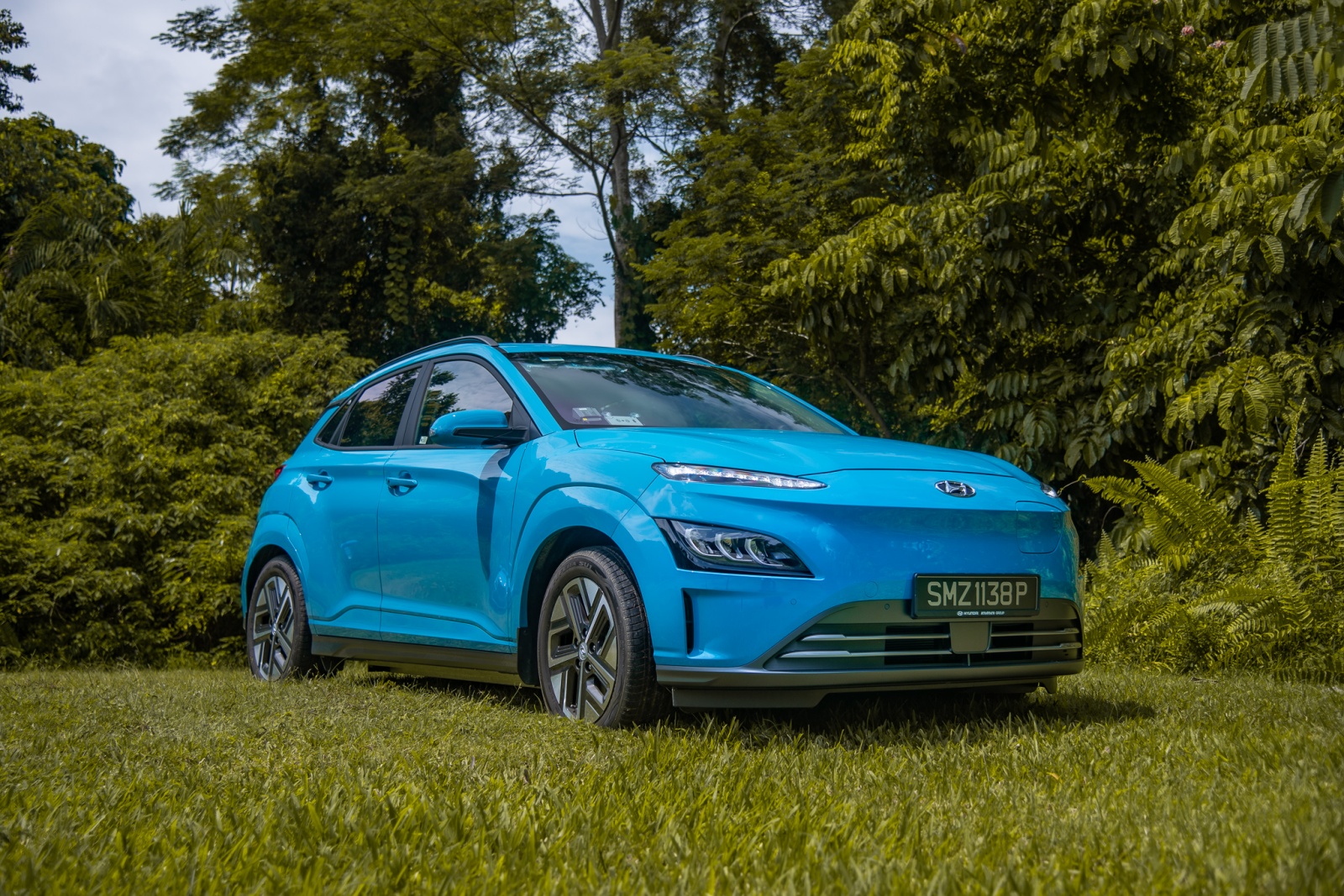
Hyundai Kona EV 2021 Review : Funky Town
Singapore - Yes, it looks a little funky. Yes, it's electric. But like the saying “Don’t knock it until you try it” goes, the Kona EV is a vehicle that one would have to spend meaningful time behind to fully appreciate its charms.
Now we’ve taken the Hyundai Kona Electric and its ICE-powered twin, the Hyundai Kona Hybrid, out on multiple occasions and came away impressed with both cars’ breadth of abilities.
Similar as they may appear, both cars are entirely different propositions altogether. While the Kona Hybrid may be the cheaper vehicle to purchase, we came away more impressed with the electric variant of the Kona.
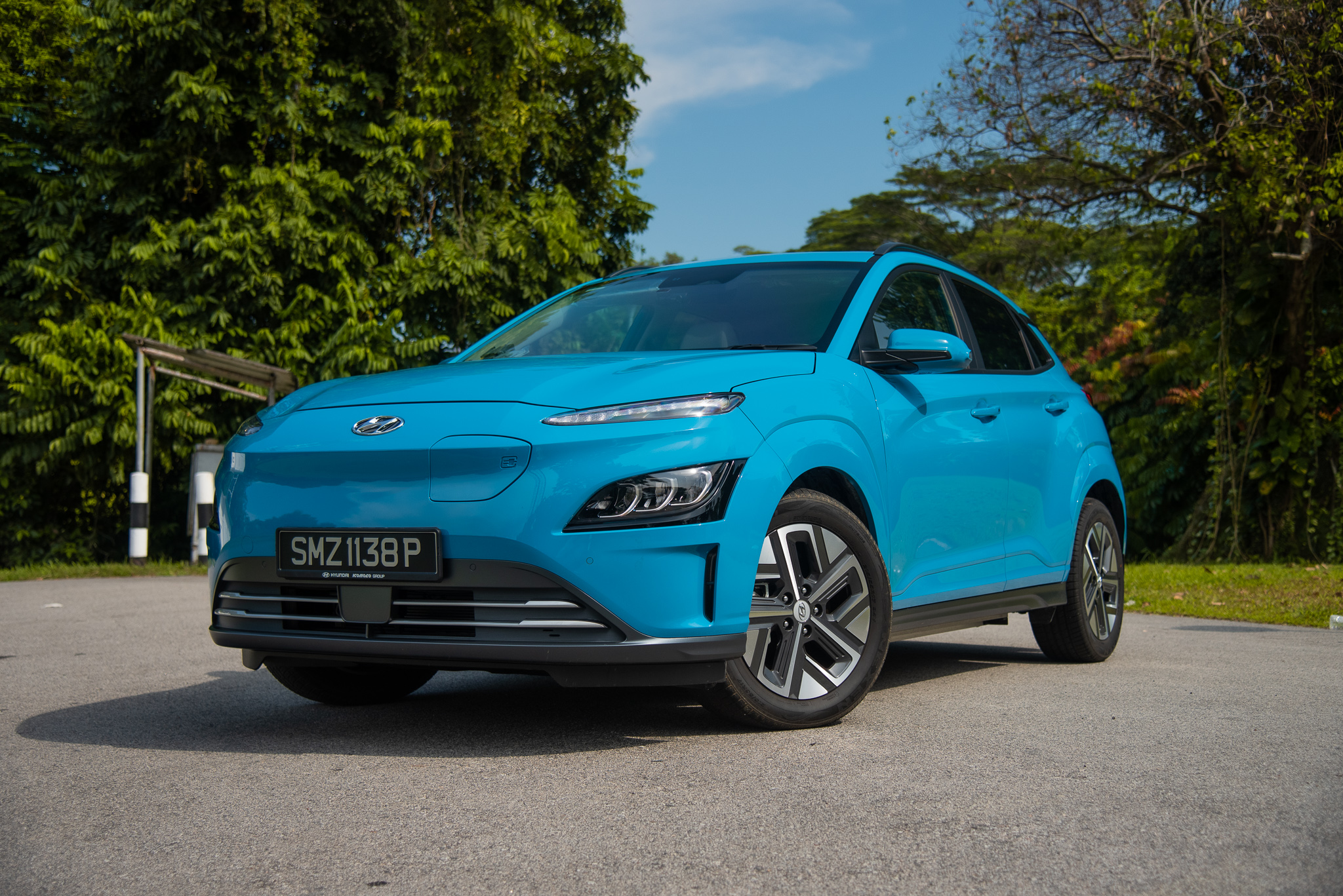
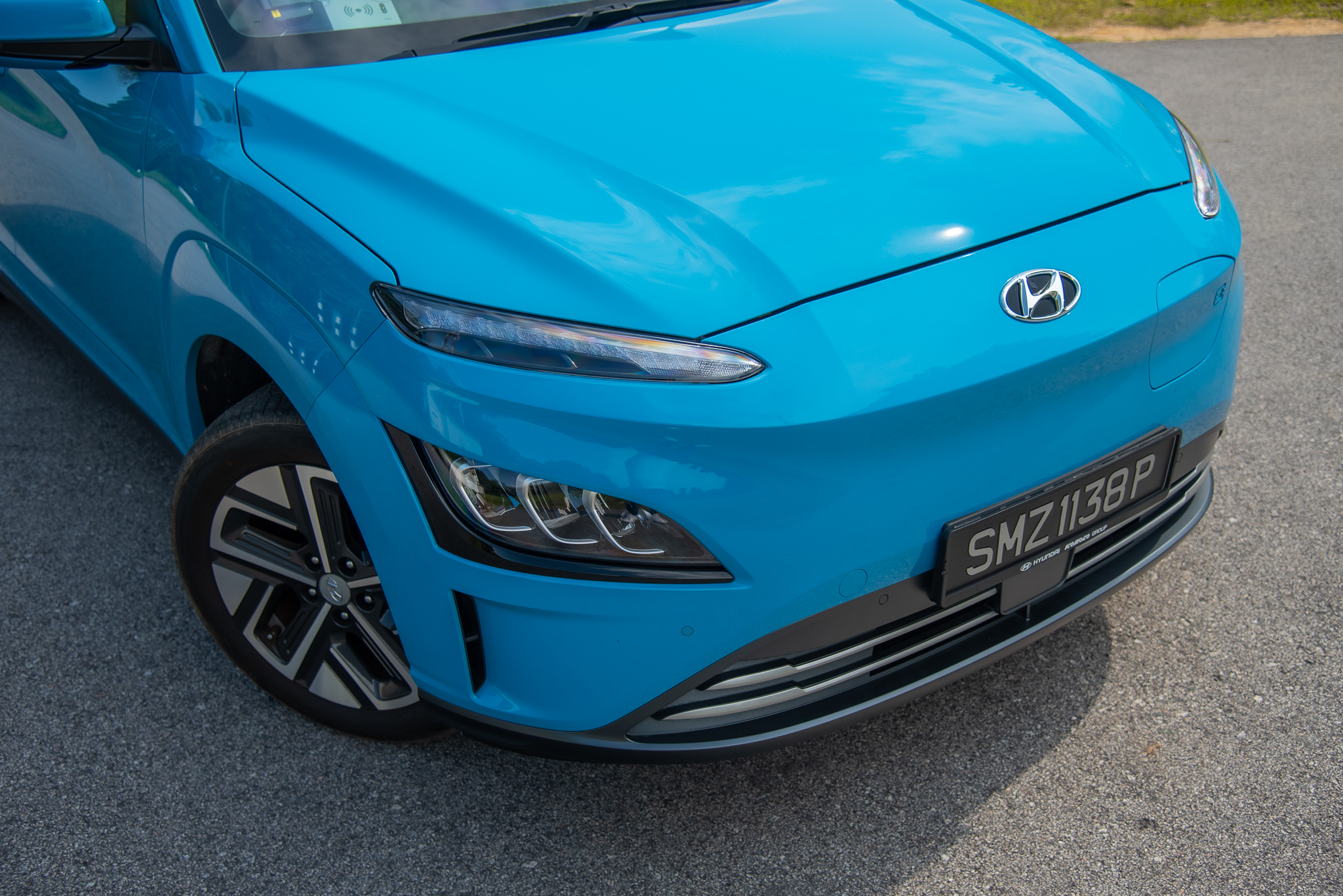
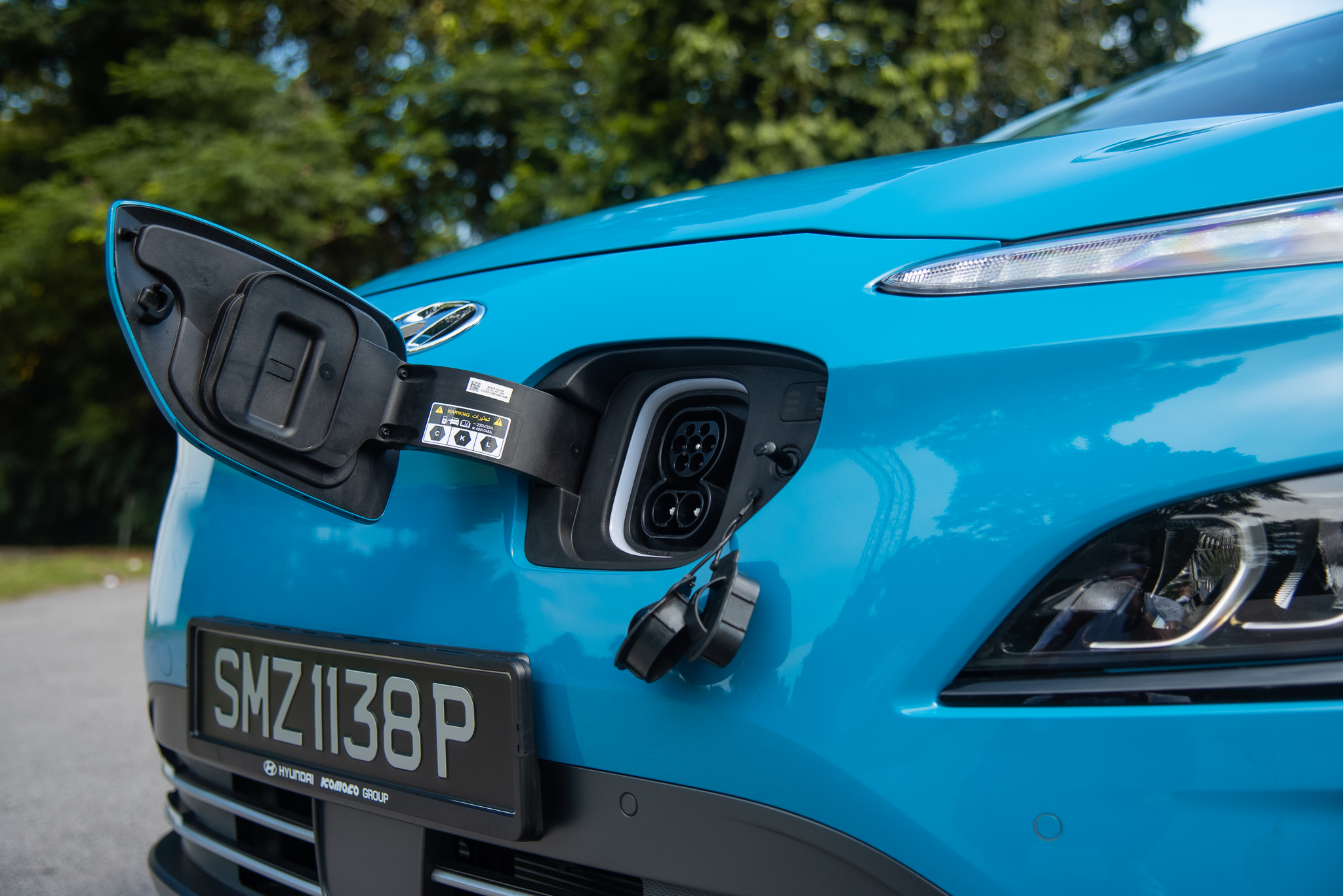
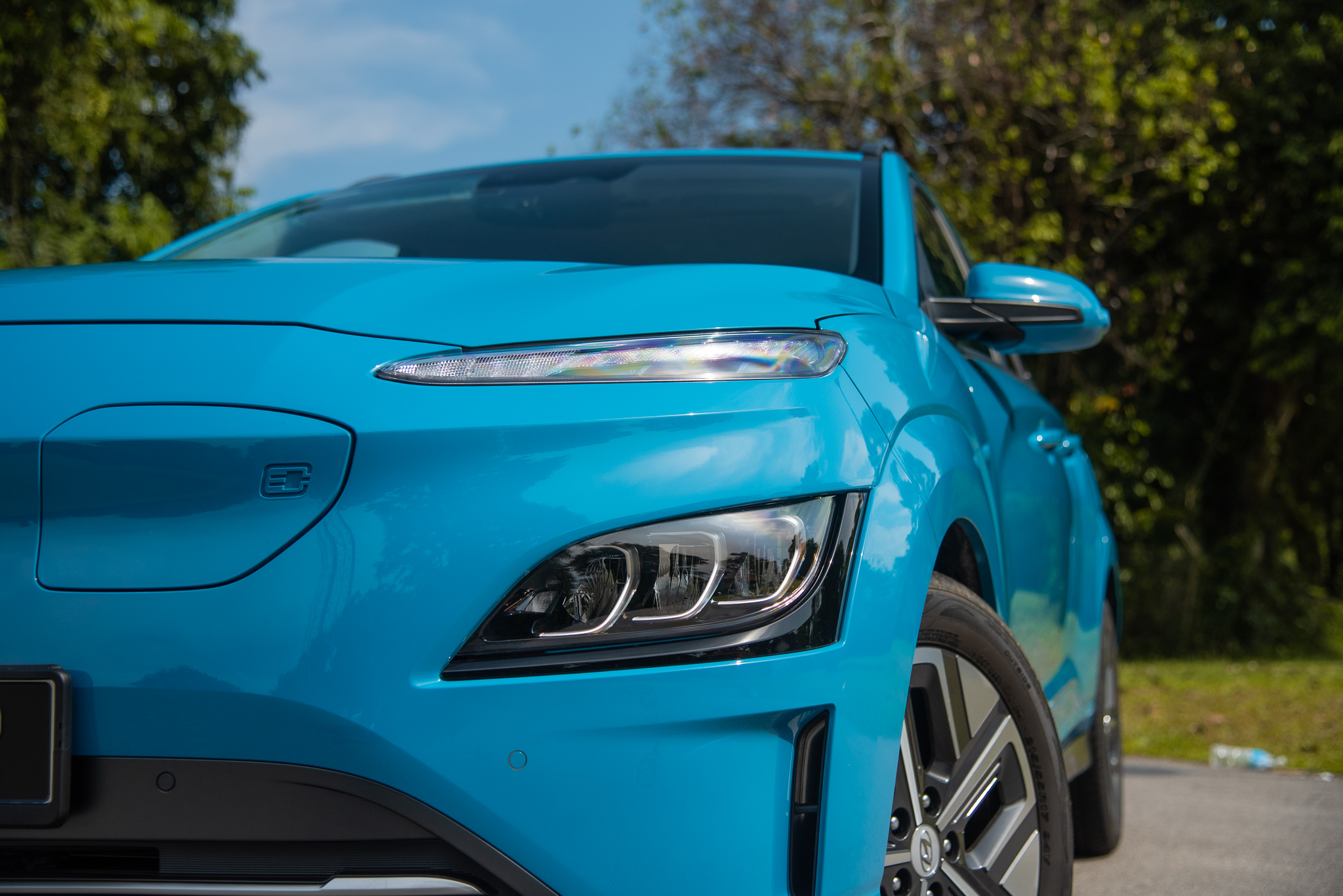
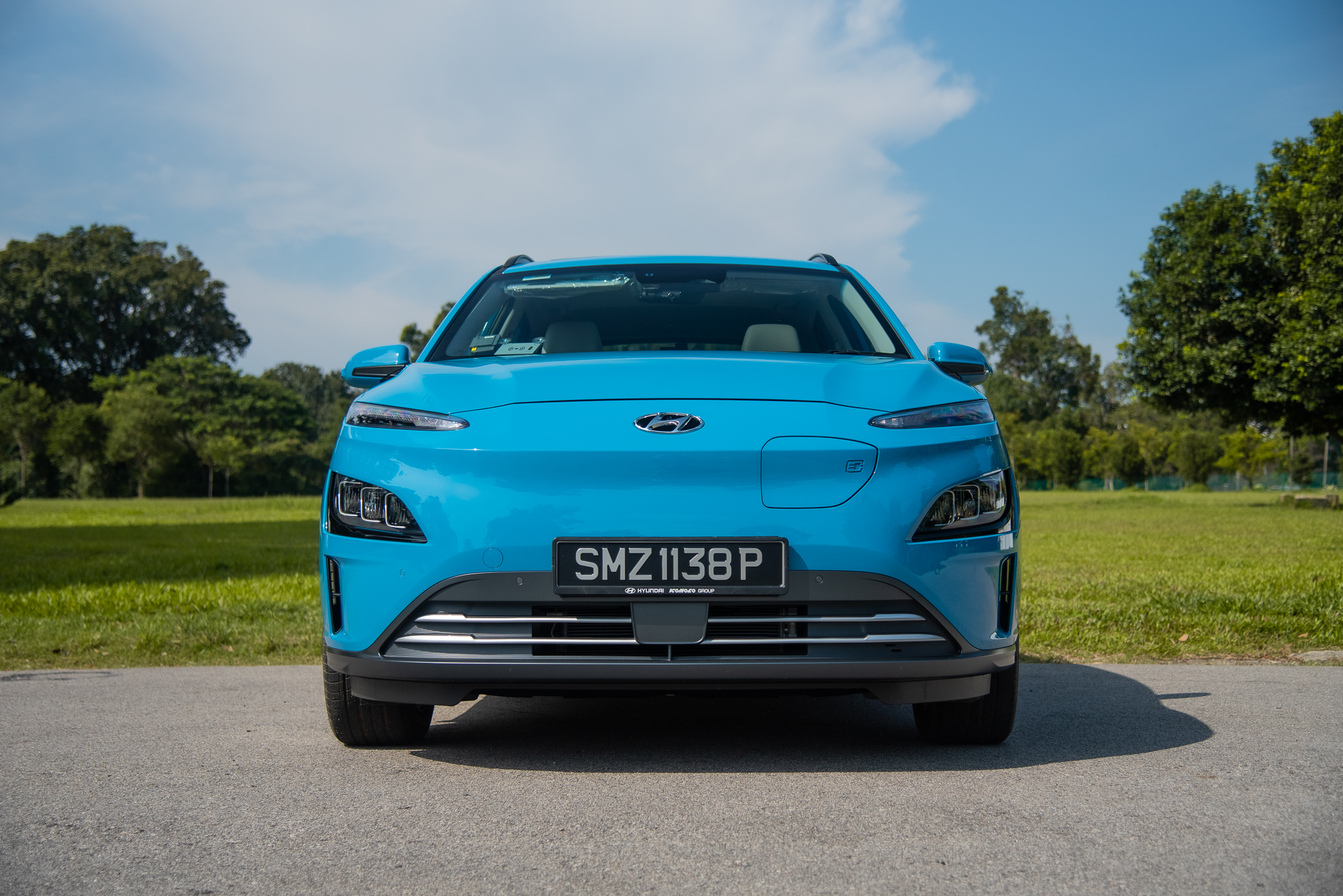
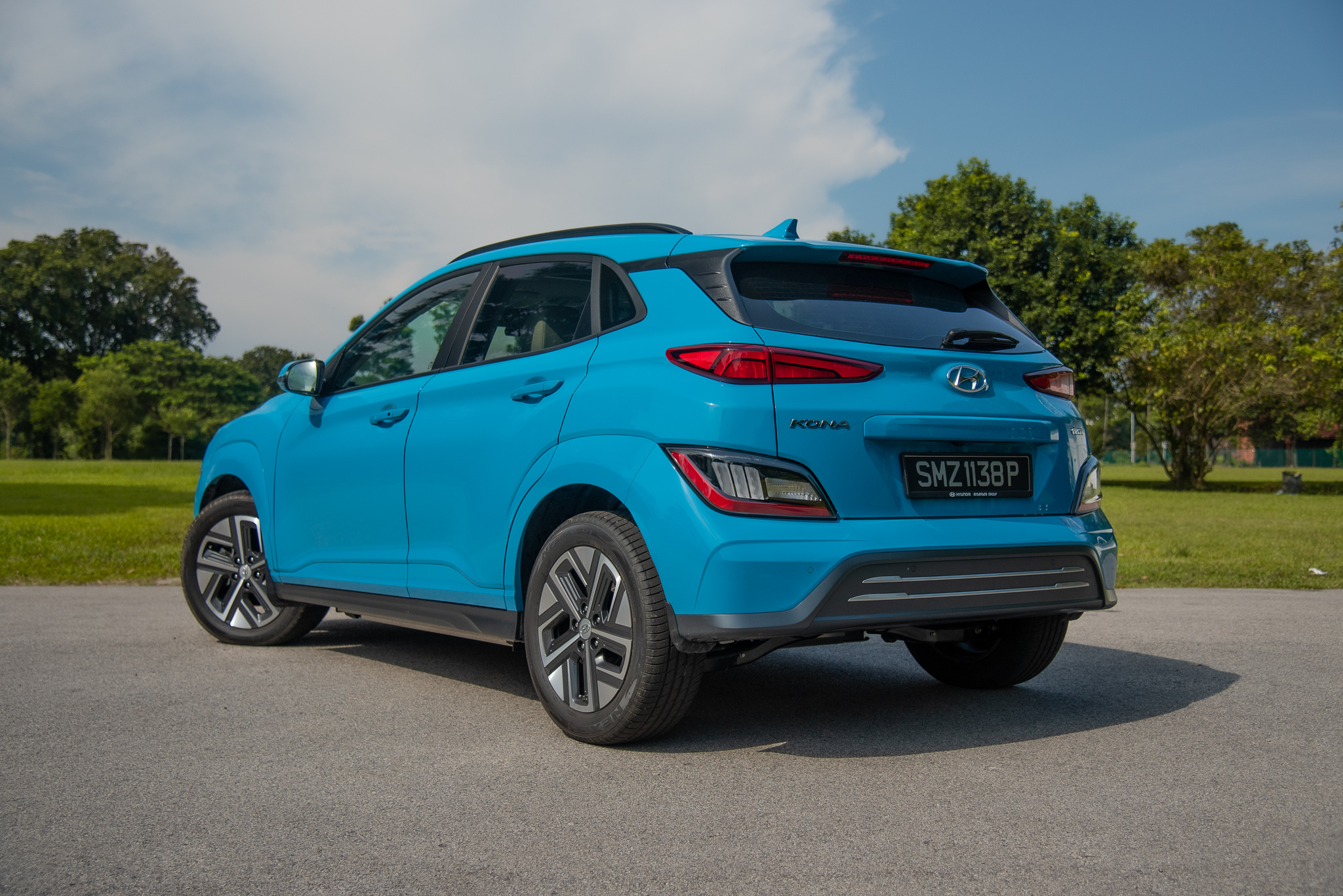
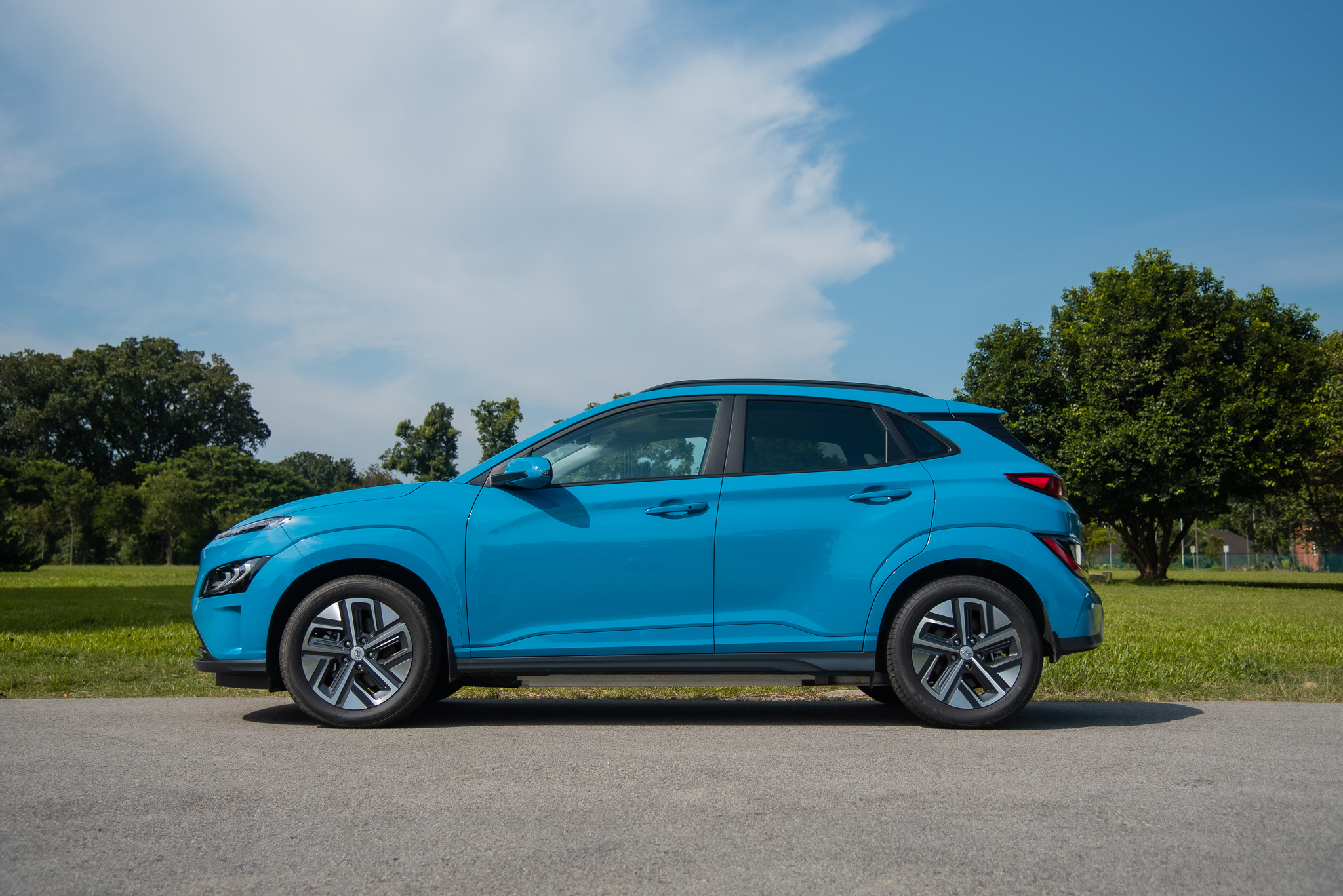
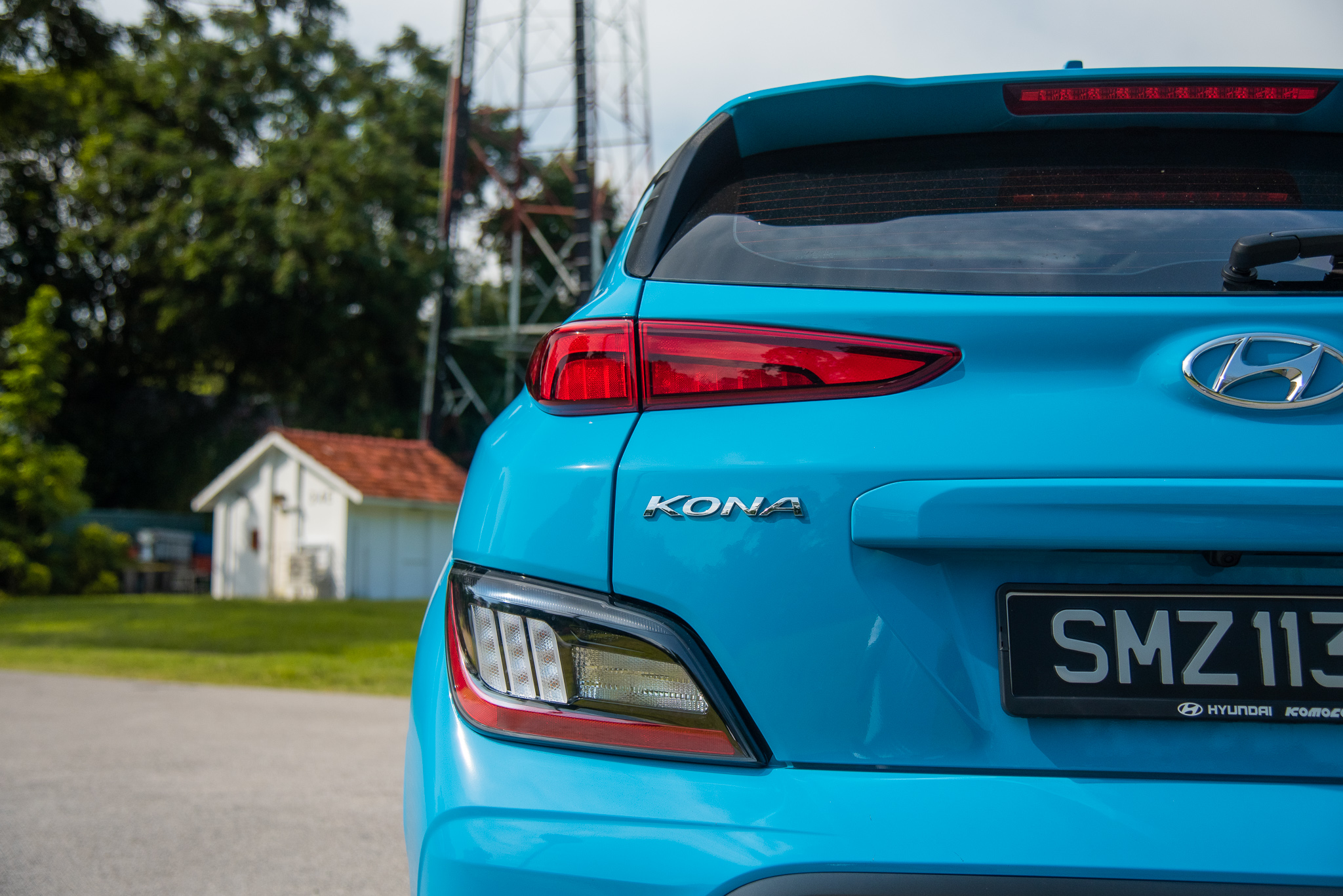
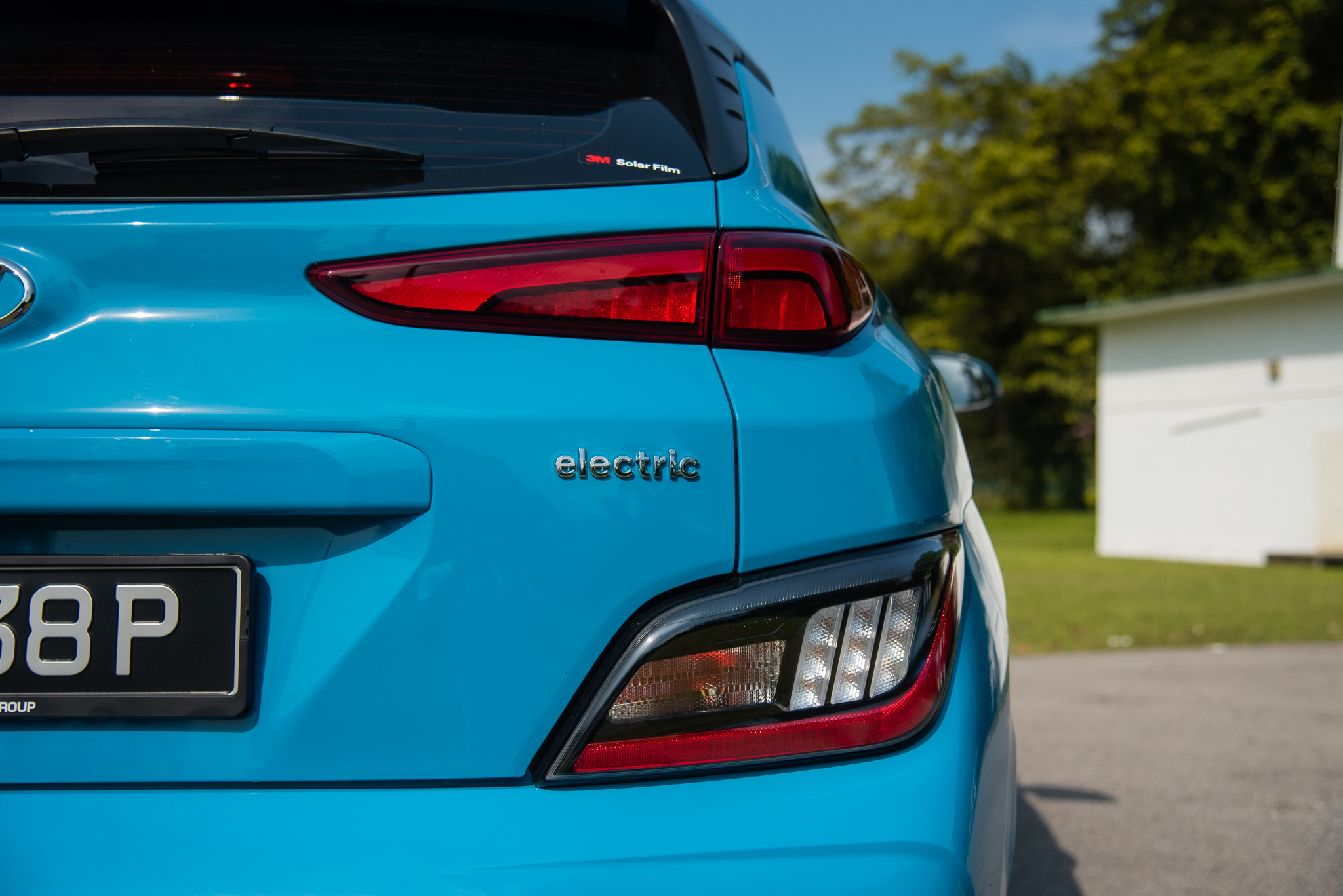
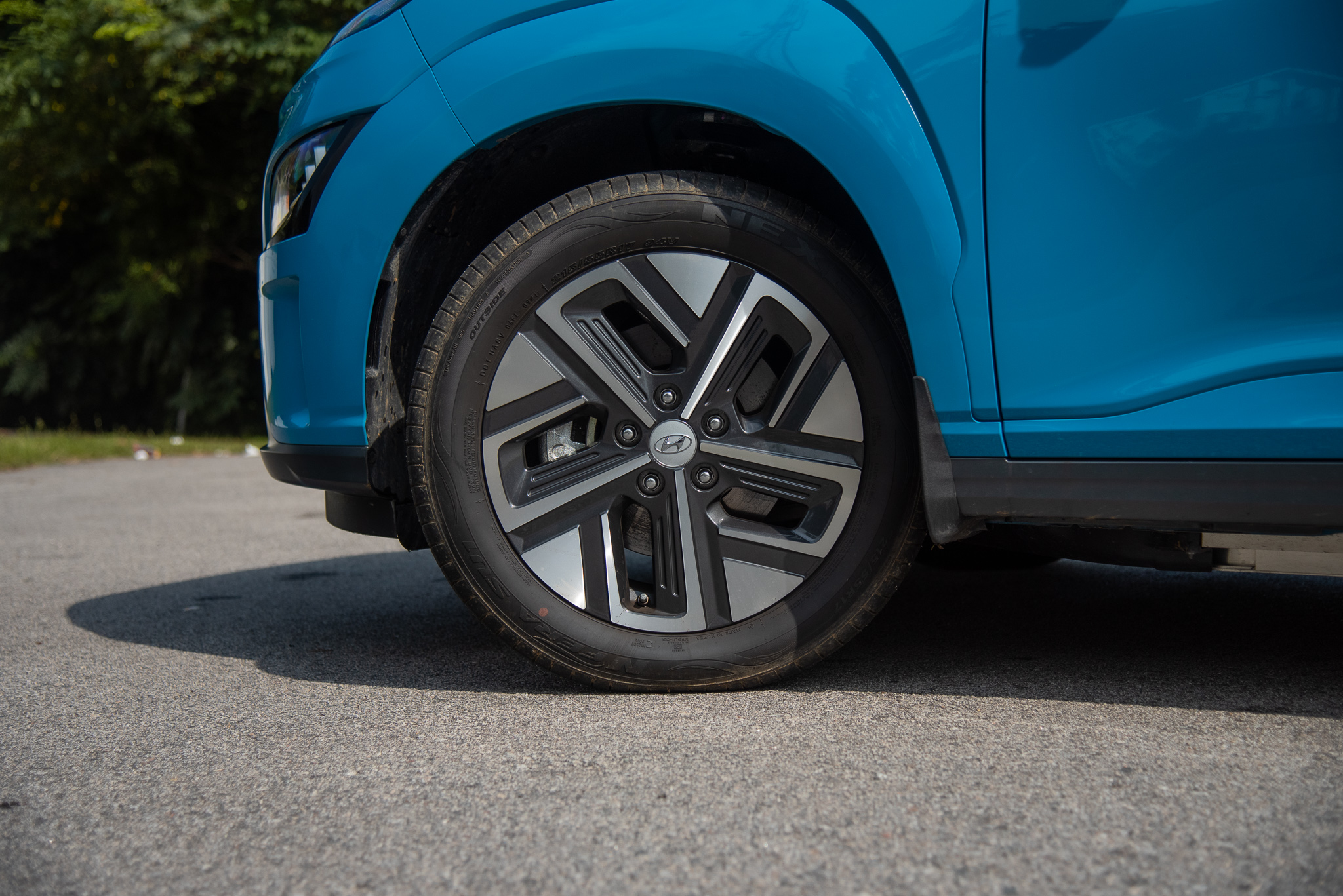
Hyundai Kona EV - Exterior
Putting both the hybrid and the EV side by side, one would quickly notice the design differences between the two.
The Kona Hybrid, having been bestowed with a more conventional hybridised 1.6-litre four-cylinder, has a large grille up front that feeds ambient air into the intercooler. The Kona Ev, having no such motor under the hood, has no grille to speak of. In its stead is a charging port that lends the Kona EV its unique face.
Where the wheel arches on the Kona Hybrid are clad in rugged matte plastic, the arches on the EV are pained in the same Surfy Blue paint as the body shell. But as a whole, the Kona Electric is the sleeker of the two vehicles. Less rugged and hard-wearing, but more polished than the Kona Hybrid.
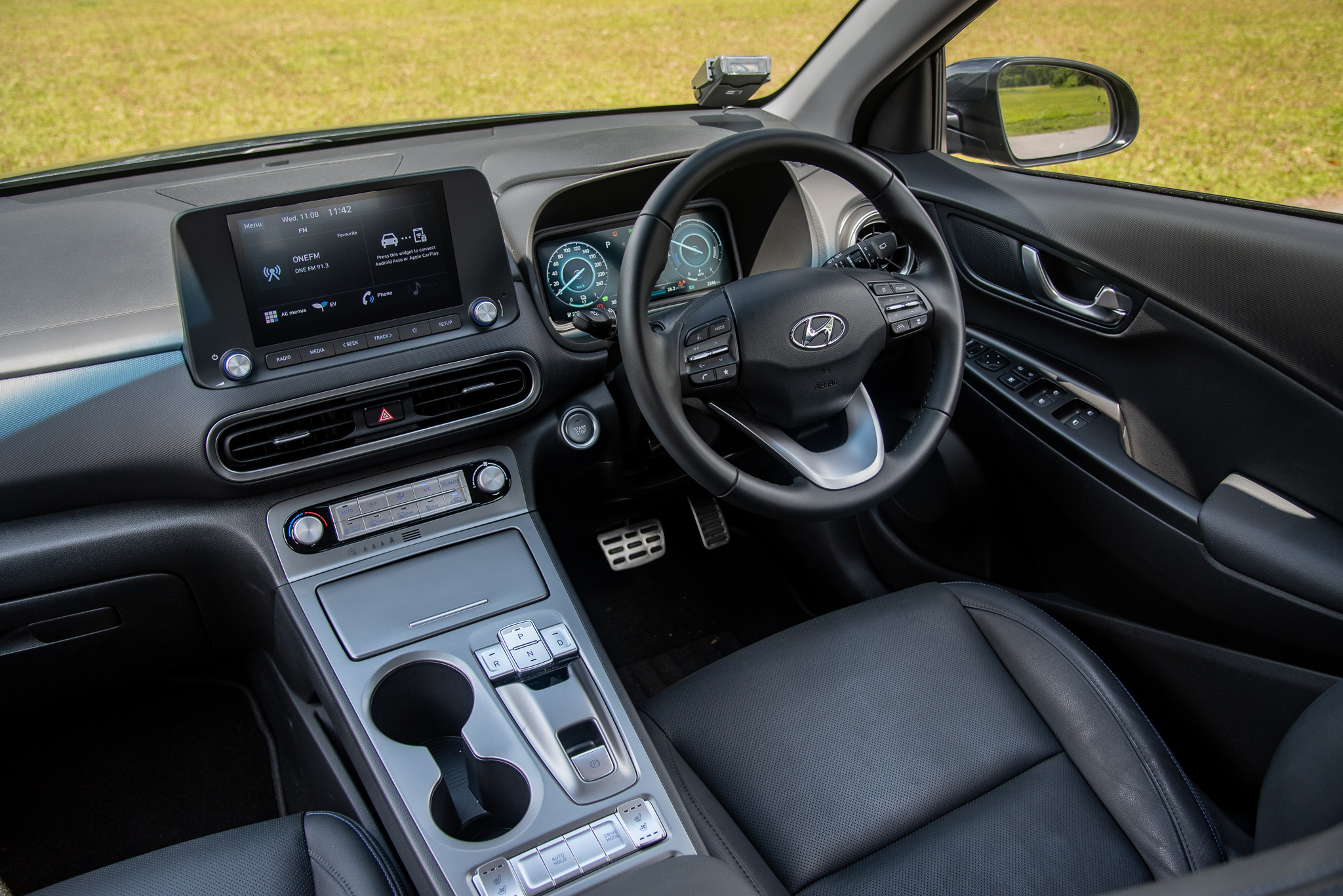
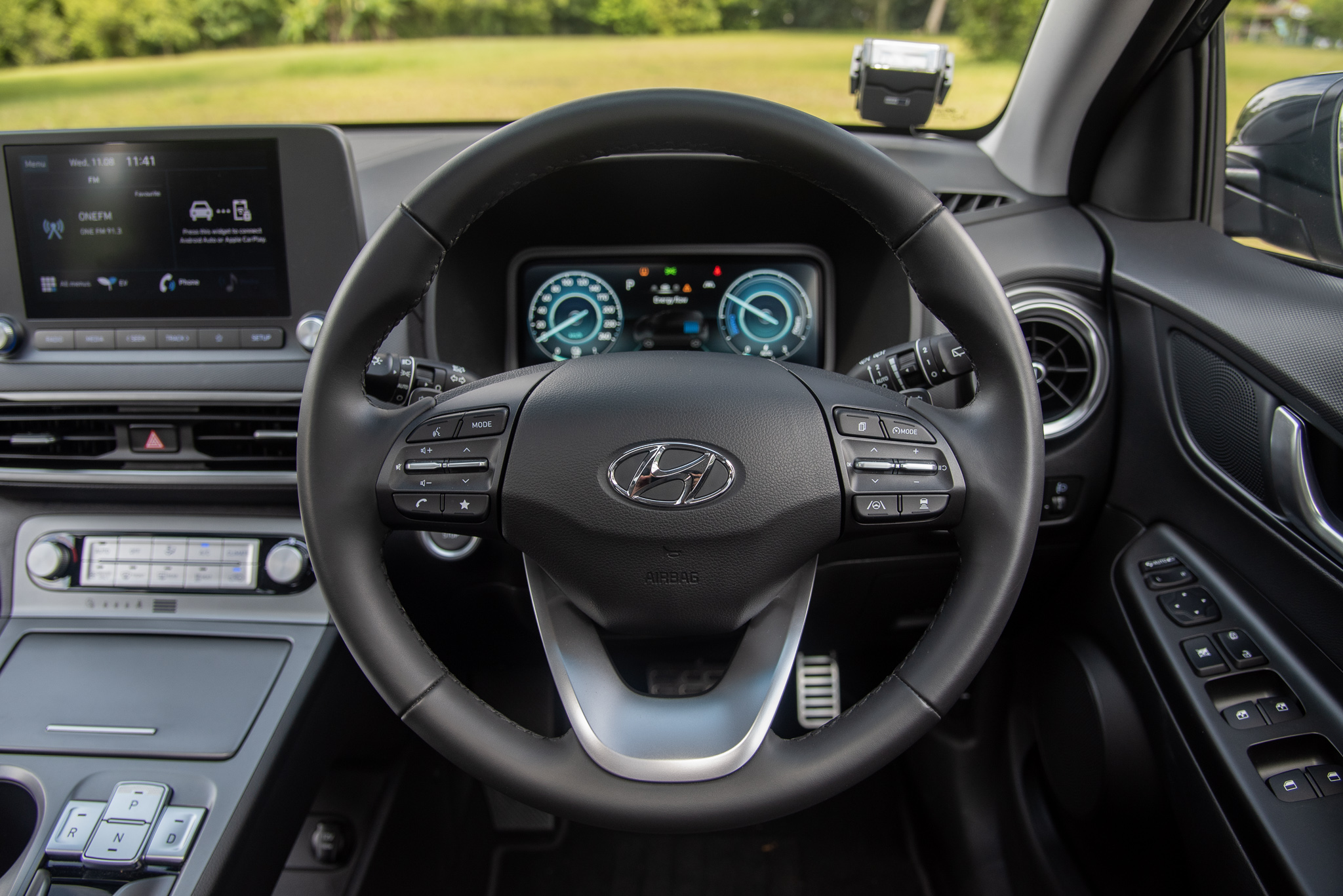
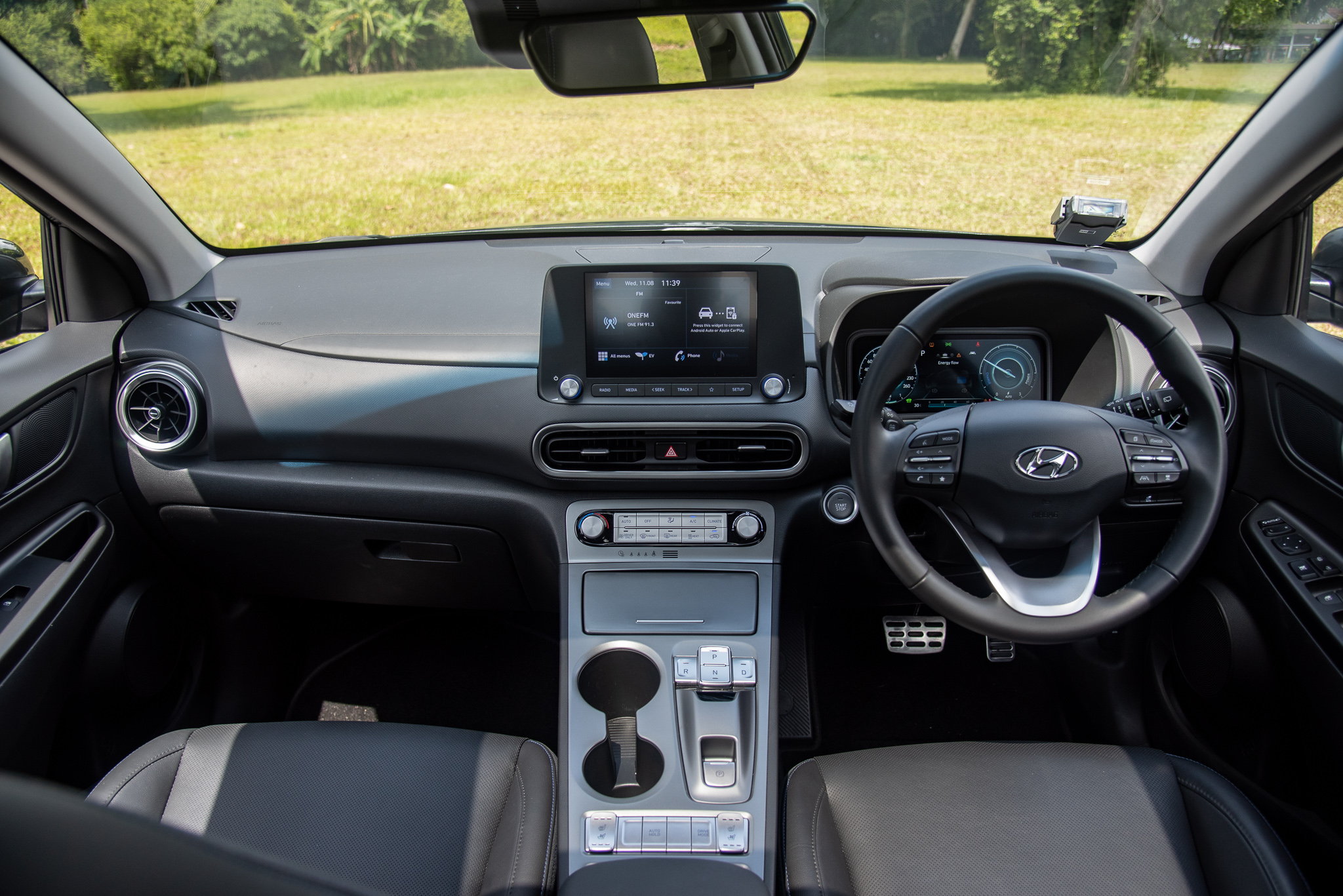
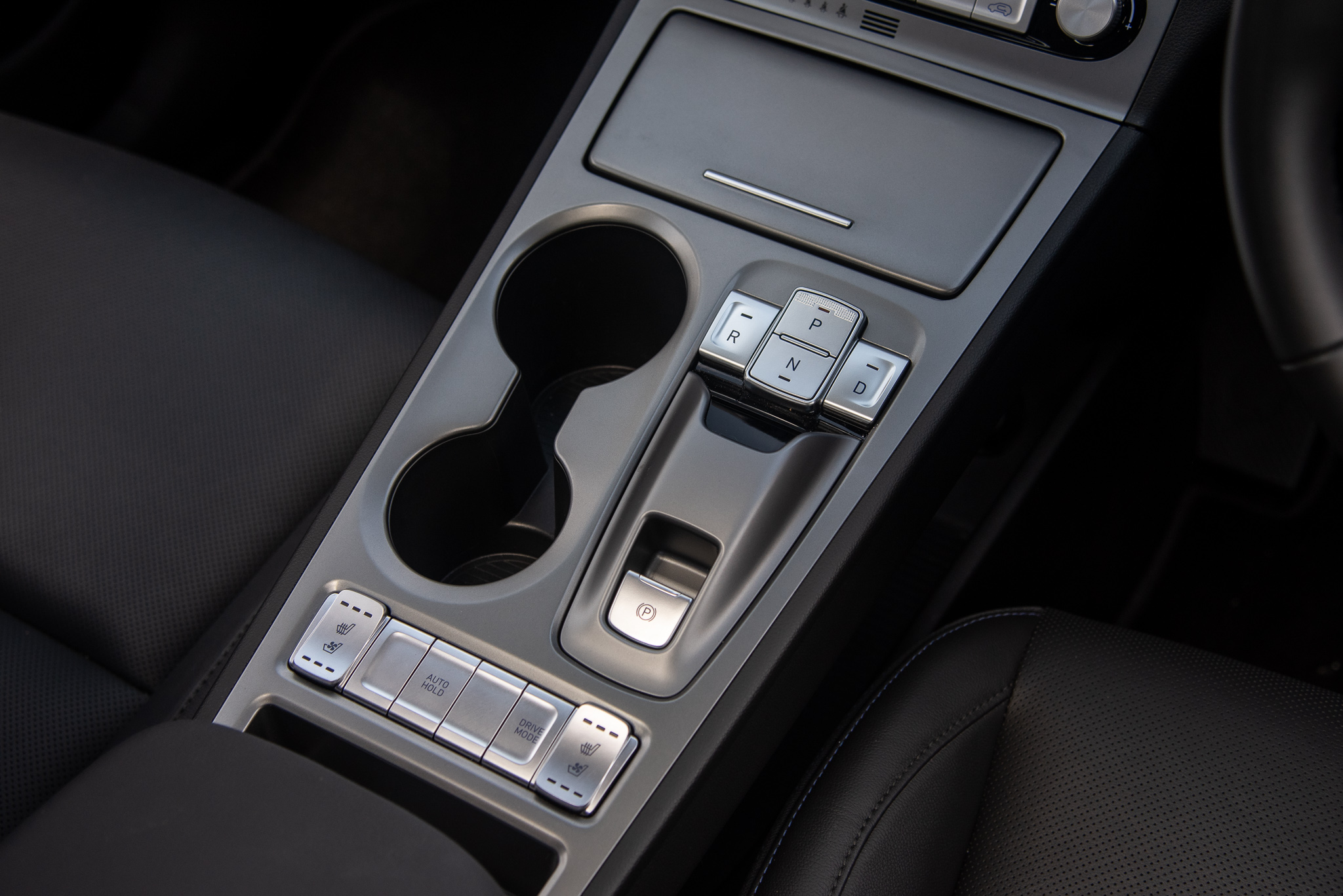
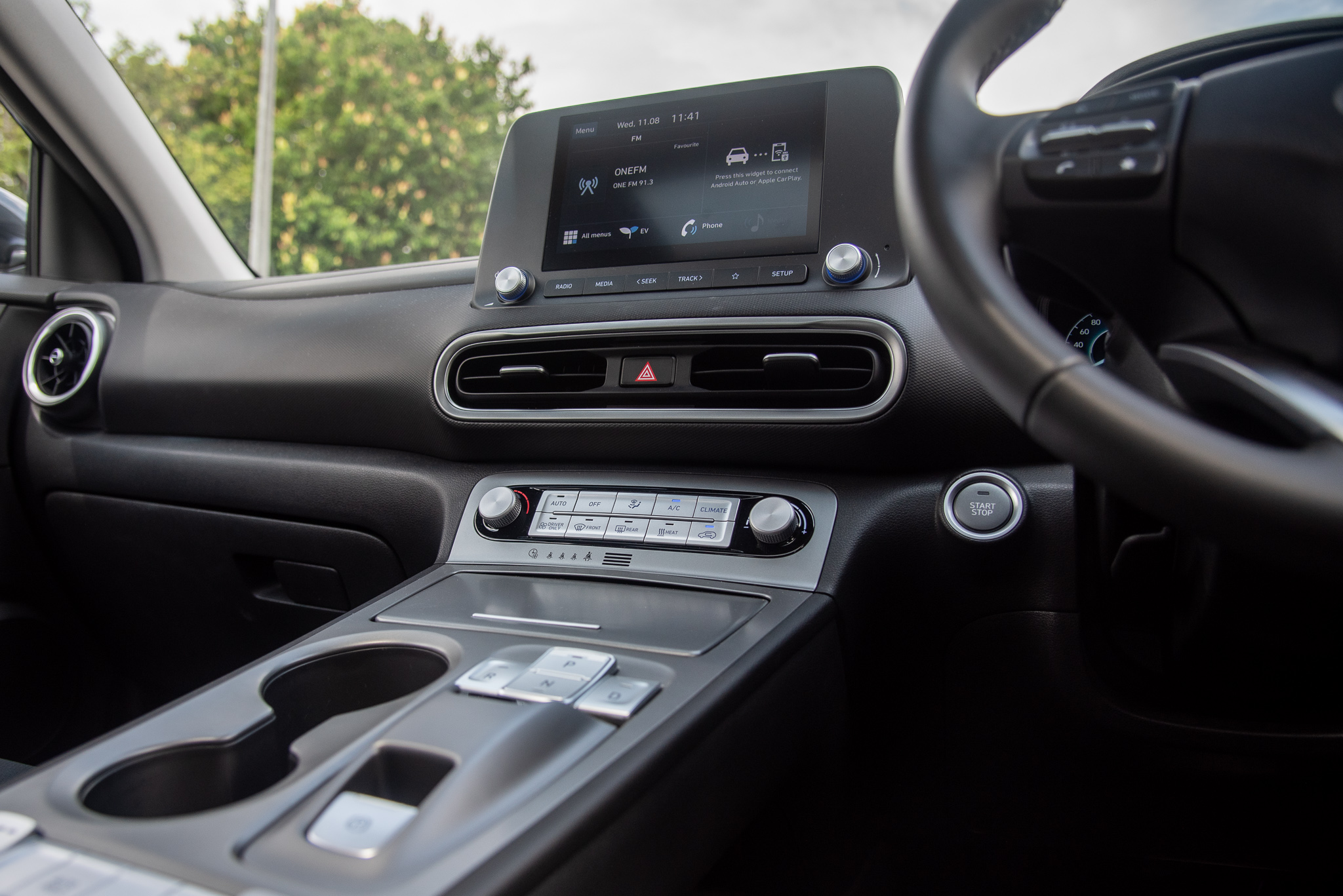
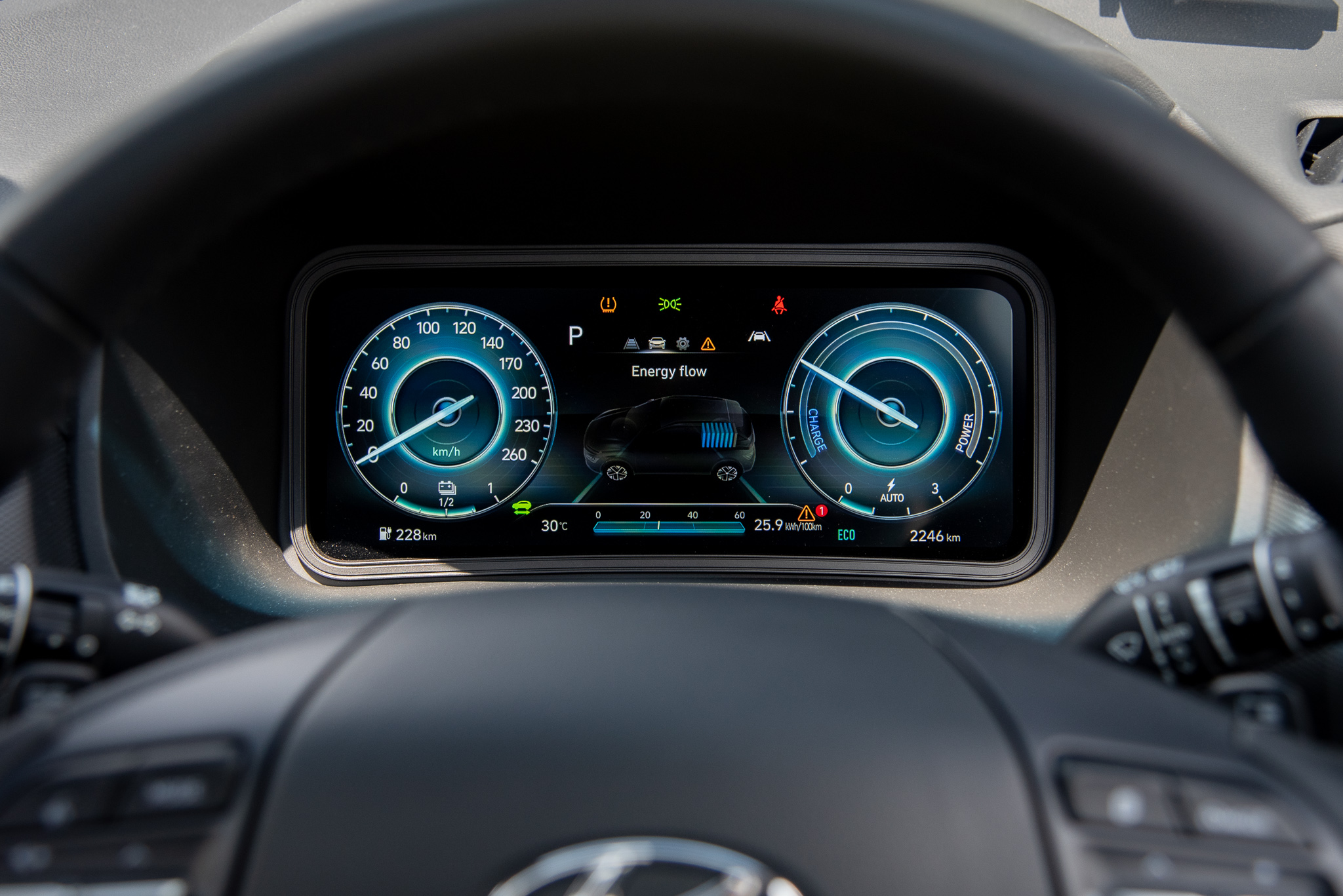
Hyundai Kona EV - Interior
Even on the inside, the Kona EV’s cabin is also a much sleeker affair. The dashboard remains largely the same, with the same steering wheel, 8-inch infotainment screen, 10.25-inch digital gauge cluster and air conditioning vents. However, the Kona EV’s centre console is entirely different from the one you get in the hybrid.
The centre console adopts a flowing design that descends from the dashboard down to the central armrest, with plenty of metallic buttons and electronic gear shift buttons instead of a gear lever. The car also comes outfitted with every conceivable creature comfort any Singaporean driver would want. Apple CarPlay and Android Auto connectivity, (remarkably effective) ventilated seats, dual-zone climate control, a full suite of safety systems and various drive modes.
It’s all very posh. But there we were in the pricier Kona EV Sunroof model wondering to ourselves: Is it worth a couple of grand more?
The sunroof model gets a few more creature comforts such as electronically adjustable front seats with lumbar support, finished in factory-fitted leather and a charging pad for your mobile phone.
As we made our way down the specifications sheet, we quickly realised that the additions you get in the sunroof model also included rain-sensing wipers, a heads-up display and front parking sensors (in addition to the rear sensors you get on the base model). We promptly dismissed our earlier quip about the price difference.
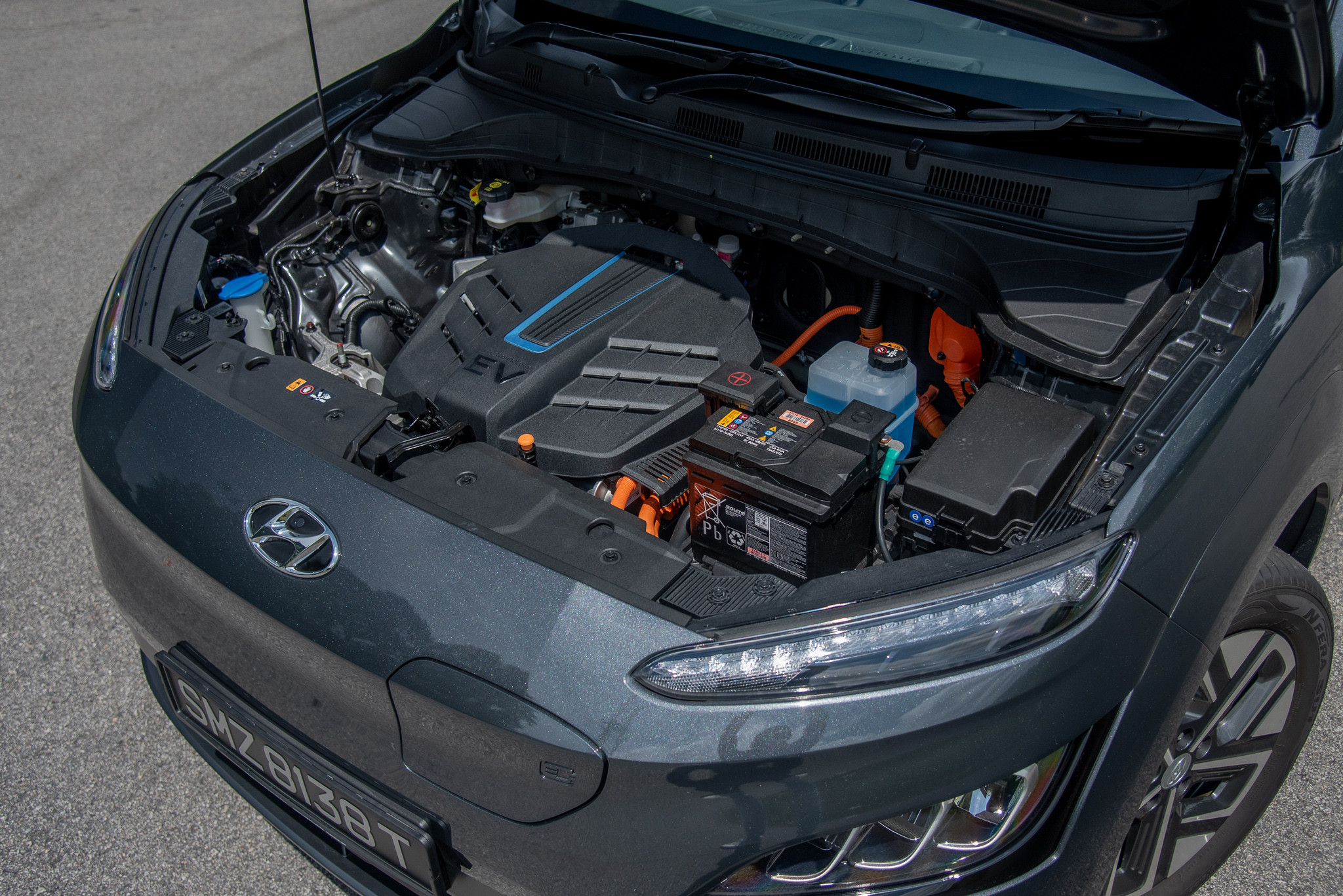
Hyundai Kona EV - Powertrain & Drive
Powering the Kona is a 134 horsepower electric motor that drives the front wheels. A rather tame figure, but the Kona EV’s motor has a staggeringly high torque figure of 395Nm. With a 39.2kWh battery pack in the rear, the Kona EV is rated for 305km of range on a full charge.
We quickly discovered that adjusting your climate controls to combat Singapore’s sweltering humidity would alter your total estimated range. That being said, it’s 305km is a very very respectable range figure. By our rough estimate fiddling about with the trip computer, we reckon it's possible to squeeze out a couple more kilometres of range with all the climate controls on a moderately low setting.
On the road, the Kona EV performs remarkably well as both a daily runabout and when you decide to open the taps a little more for an extra dose of fun. All thanks to the technological magic of an EV drivetrain’s instantaneous torque. Driven in a more pedestrian fashion, the suspension setup soaks up all manner of bumps, speed humps and rough tarmac all while retaining its composure. A trait that is further amplified by the near-silent electric drivetrain delivering its 134hp/395Nm down to the asphalt.
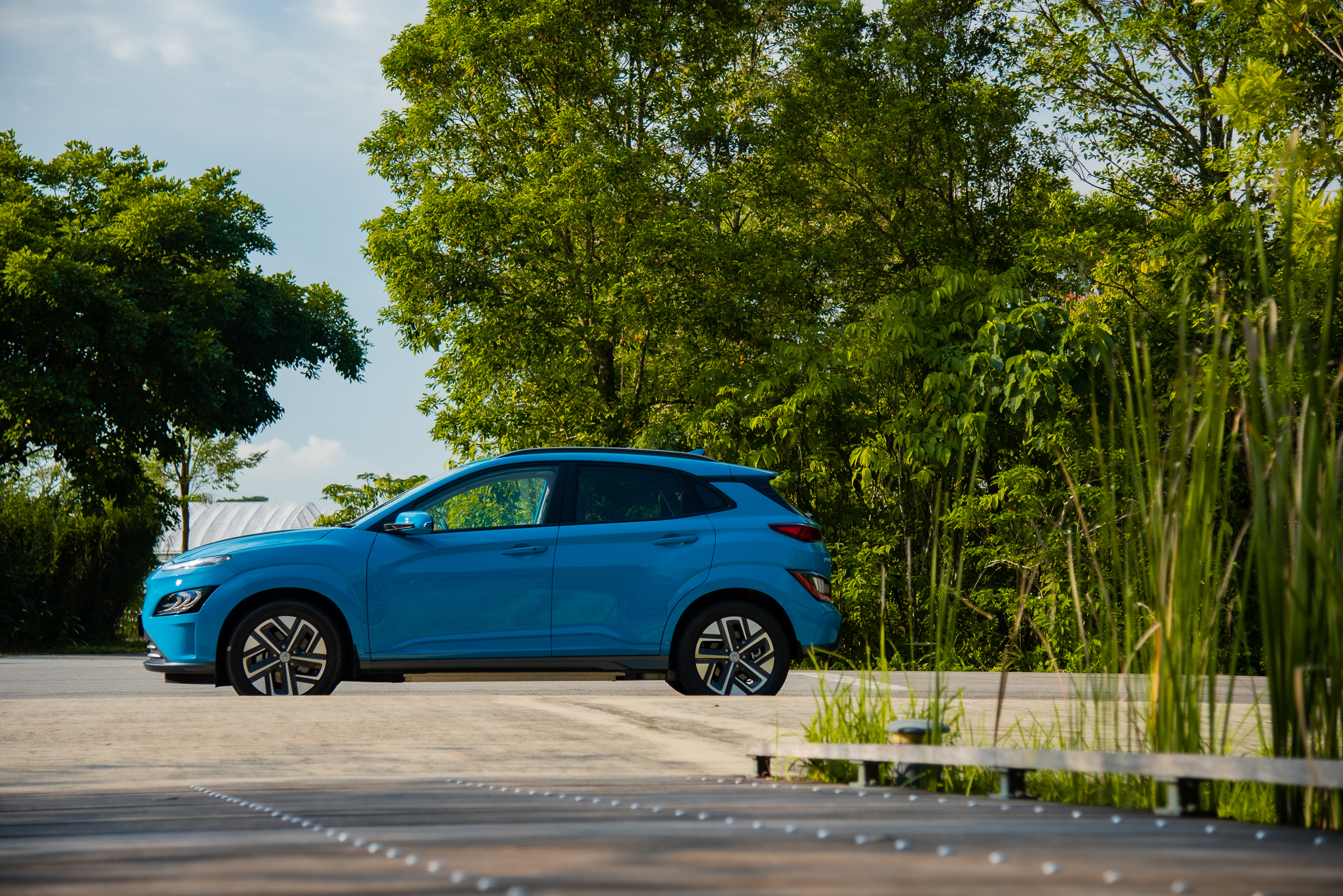
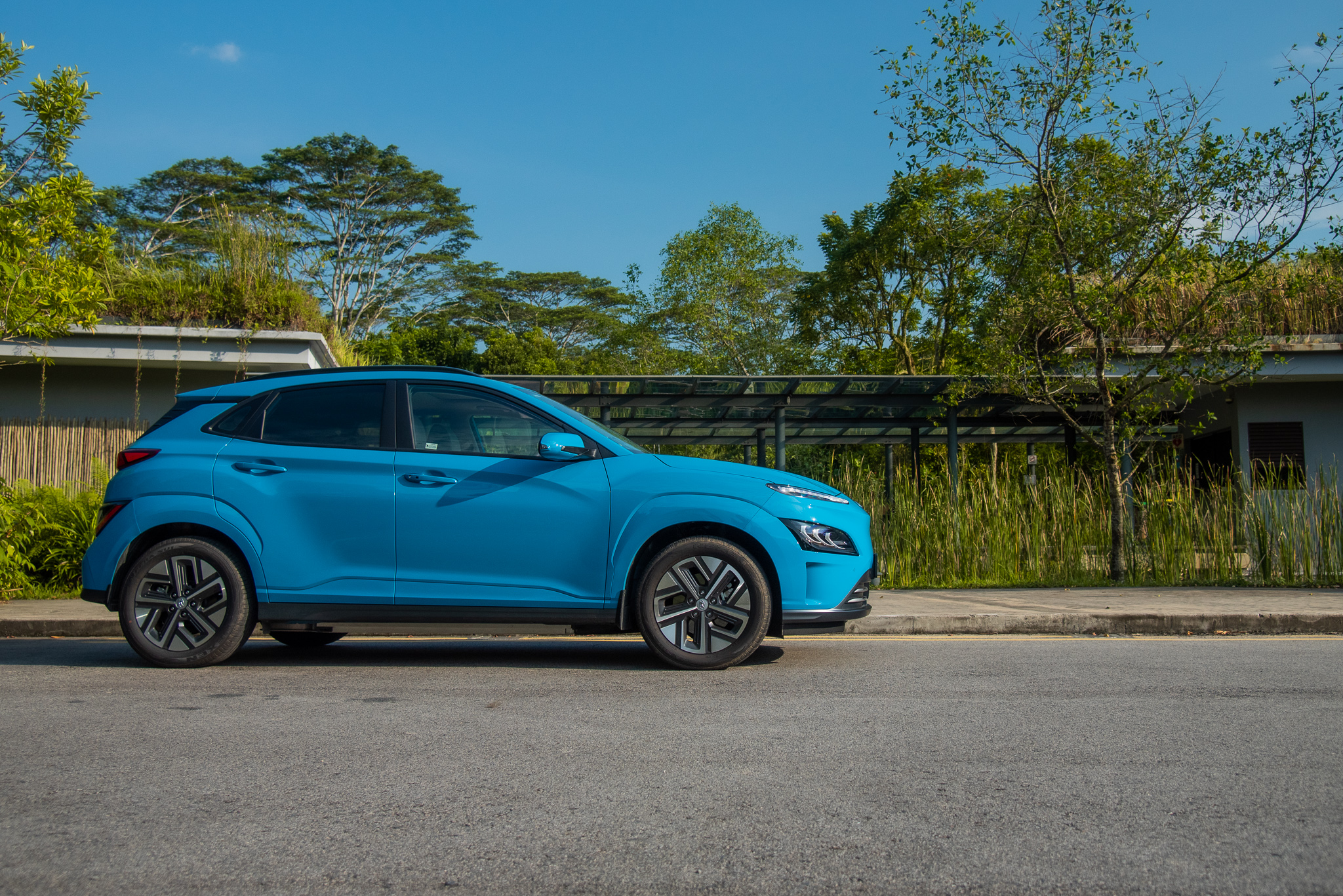
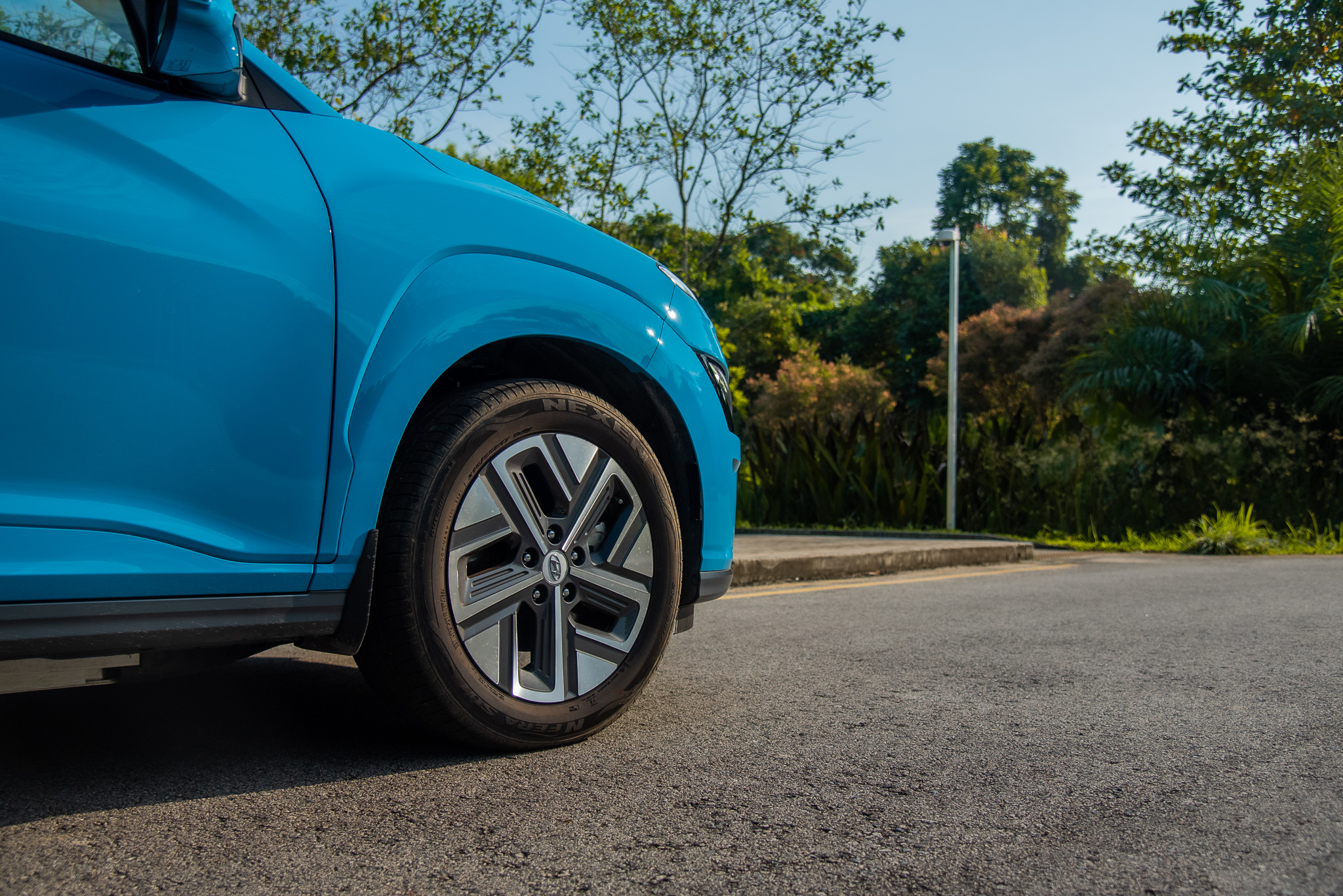
The combination of low CG, MacPherson struts up front and multi-link rear end make for a surprisingly dynamic vehicle that responds quickly to steering inputs, all without unsettling the quiet ambience of the cabin.
Its high torque figure makes quick work of any overtaking manoeuvres and makes for an uncharacteristically sporty drive than one would expect from a subcompact SUV such as this. As a result, the Kona EV’s 0-100km/h sprint time feels far more rapid than the 9.9 seconds stated on the spec sheet.
It may be a stretch to say this, but it's a car that doesn’t need to handle as deftly and competently as it does on a winding stretch of B-road. We even tested that theory on the winding bends of Lim Chu Kang’s farmland estates and came away impressed with the brisk pace that this little crossover is capable of.
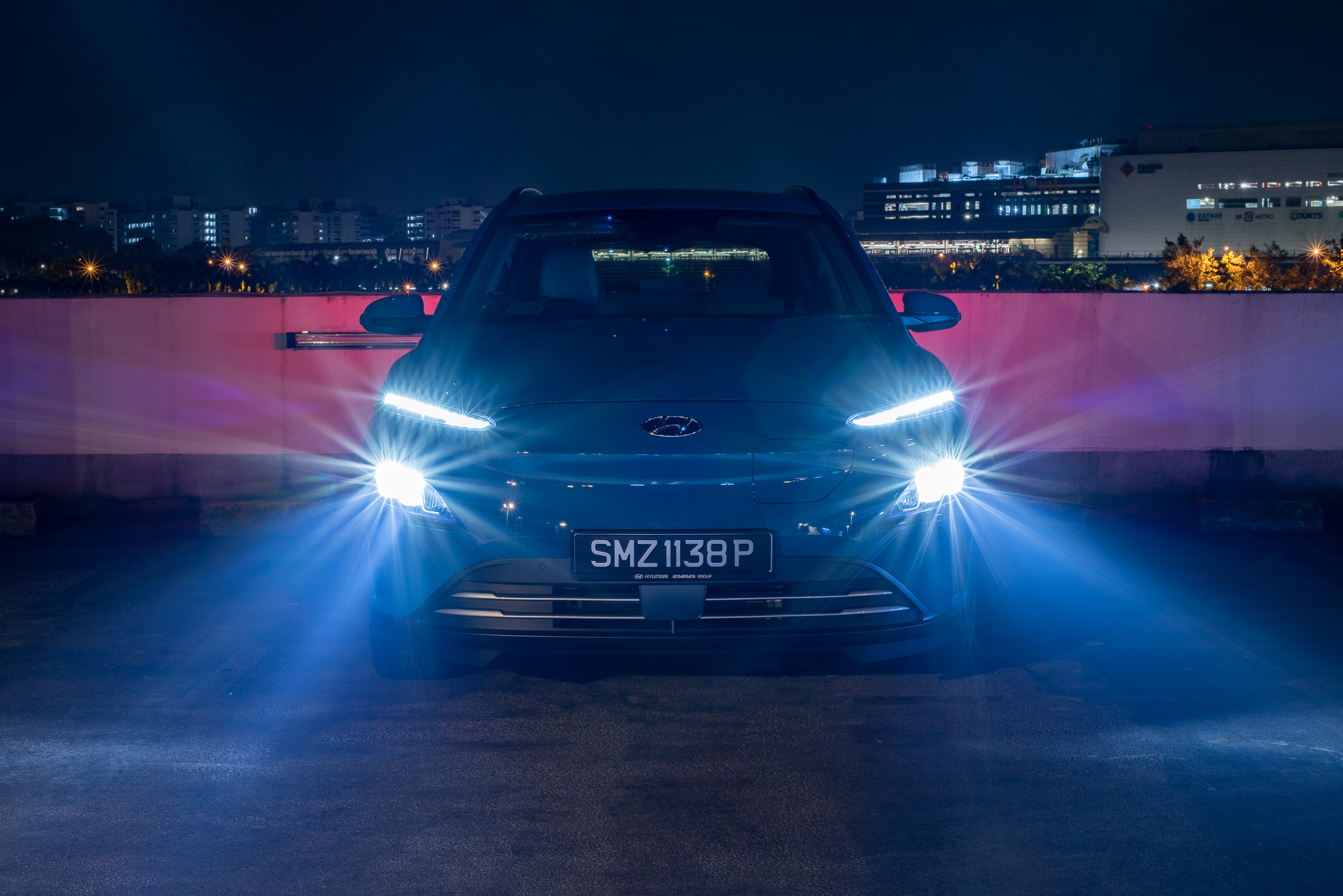
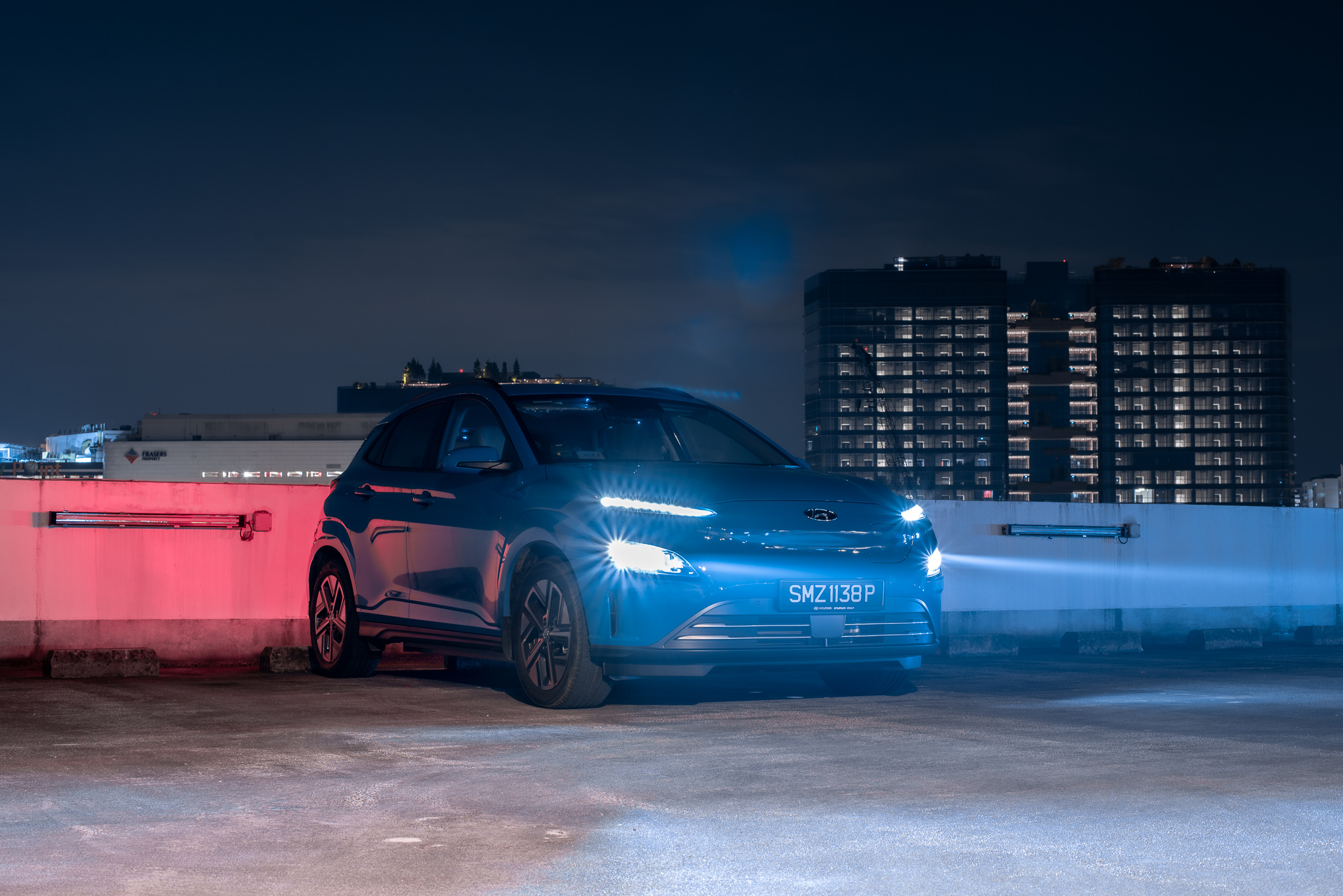
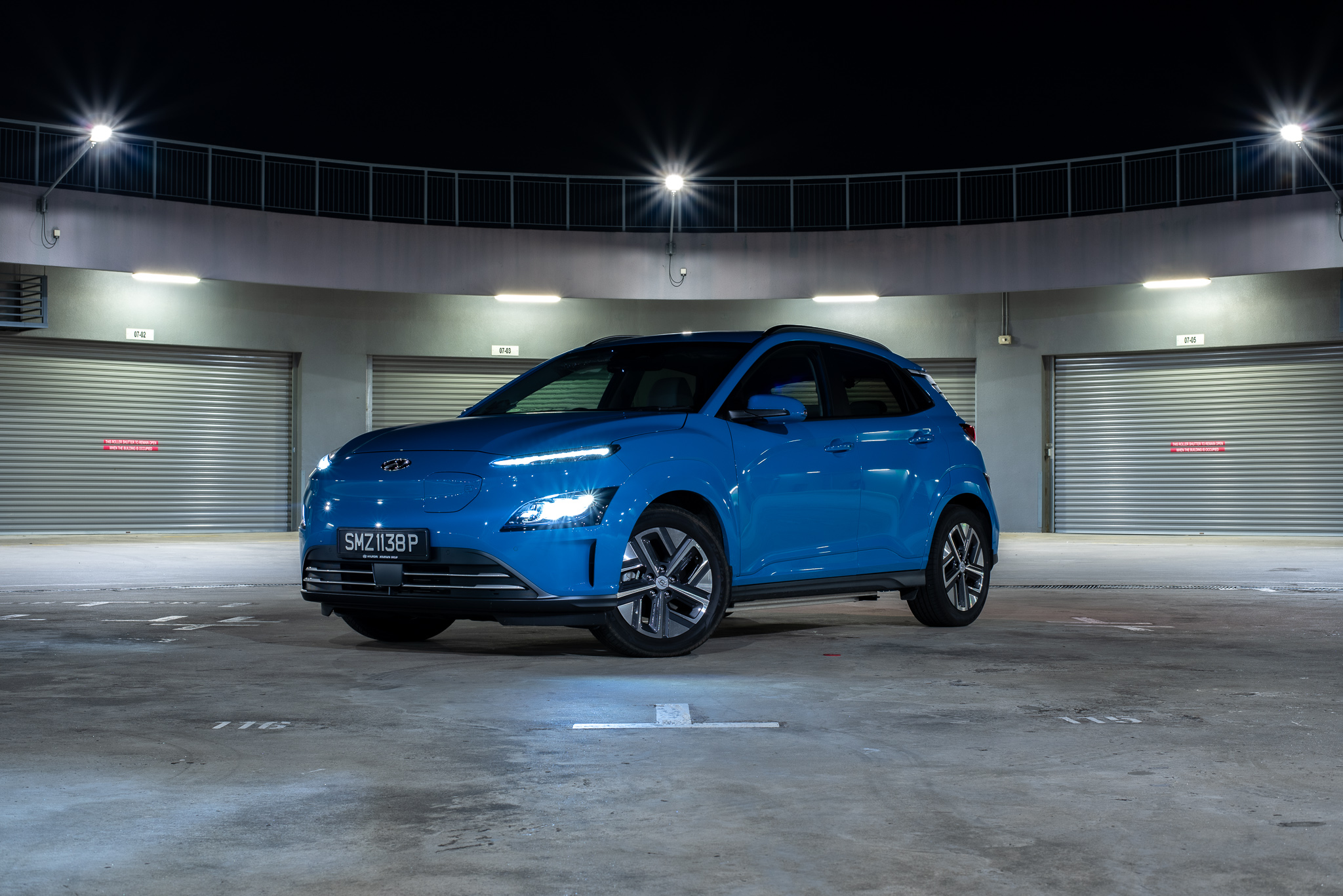
Hyundai Kona EV - Conclusion
Having spent a considerable amount of time spent behind the wheel of the Kona EV, we found that as fuel efficient and comfortable as the Kona Hybrid may be, the Kona EV is indeed the more impressive vehicle of the two in terms of handling dynamics. If you could look past the looks of it, of course.
The long-range 64kWh Kona EV may be more powerful, quicker from 0-100km/h (7.9 seconds) and has a higher top speed. But considering the S$50,000 disparity, this standard range 39.2kWh model is a perfectly sensible choice for any and all interested parties.
Given the improvements made to Singapore’s EV charging network, the Kona EV is a car that would quite easily segue into the lives of most consumers who are venturing into EV ownership.
PHOTOS Jay Tee
Hyundai KONA Electric (Standard range)
Electric Motor 134hp, 395Nm
Battery Lithium-Ion, 39.2kWh
Charge Time / Type 4.5hrs / Wallbox; 50mins approx. / DC 50kW fast charge
Electric Range up to 305km
0-100km/h 9.9secs
Top Speed 155km/h
Energy Consumption 15kWh/100km (avg.)






